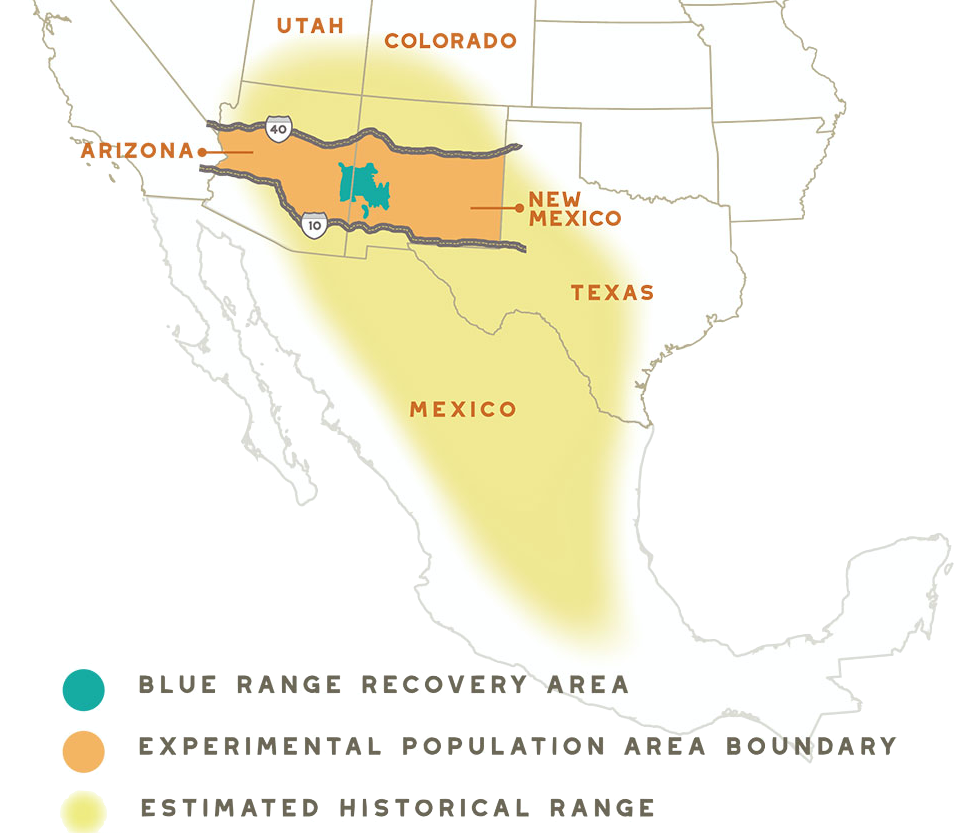Mexican Gray Wolf
Canis lupus baileyi
IDENTIFICATION
Length: Adults can reach 3.9 to 4.9 feet in length.
Weight: Adults vary in weight from 60 to 82 pounds.
Color: Their color is gray, black and/or buff with reddish coloring. Wolves have rounded and relatively short ears, and a large, blocky muzzle.
Sounds: Yapping, howling, barks, whimpers, and screams can all come from wolves.
HABITAT
Range: Mexican grays originally ranged central Mexico to western Texas, southern New Mexico, and central Arizona. Their historic range has shrunk to the mountain range between New Mexico and Arizona.
Diet: Like other gray wolf subspecies, Mexican grays prey on ungulates (deer and pronghorn), rabbits, birds, and small mammals.
Status: Critically Endangered (listed in 1976, with only a handful left in the wild). The Wildlife Science Center is actively involved in their Species Survival Plan (SSP), which focuses on a selective breeding effort to maintain species genetic diversity. There are currently over 160 individuals surviving in the wild.
Find out more about the Species Survival Program and the Mexican Gray Wolf.
Comparing canid tracks. Image from WesternWildlife.org.
LIFE CYCLE
Wolves generally live to be 6-8 years old in the wild. The mortality for wild wolf pups is high (40%-60%), but for wolves greater than 5-months old it drops to approximately 36%. Pack size is highly variable due to the birth of pups, but is typically between 4 to 8 wolves. Territory sizes range from 25 to 150 square miles; neighboring packs can share common borders, but territories rarely overlap by more than a mile. These pack animals rely on strong social bonds to hunt and raise pups.
Reproduction: Wolves breed from February to March in Minnesota, but breeding period varies among regions. Gestation period is usually around 63 days, with 4-7 pups born in April and May. Pups are born in a den and will live there until they are 6-8 weeks old. Pups remain at or near these sites while the adults hunt and bring back food. Gray wolves generally disperse from their pack at 1-2 years old.
Mexican gray wolves are a subspecies of gray wolf. They are sometimes referred to as “el lobo”, which means “the wolf” in Spanish. They are smallest the subspecies of gray wolf in North America.
Mexican Gray Wolf recovery area and historic range. Image from FWS (via EarthIsland.org).




